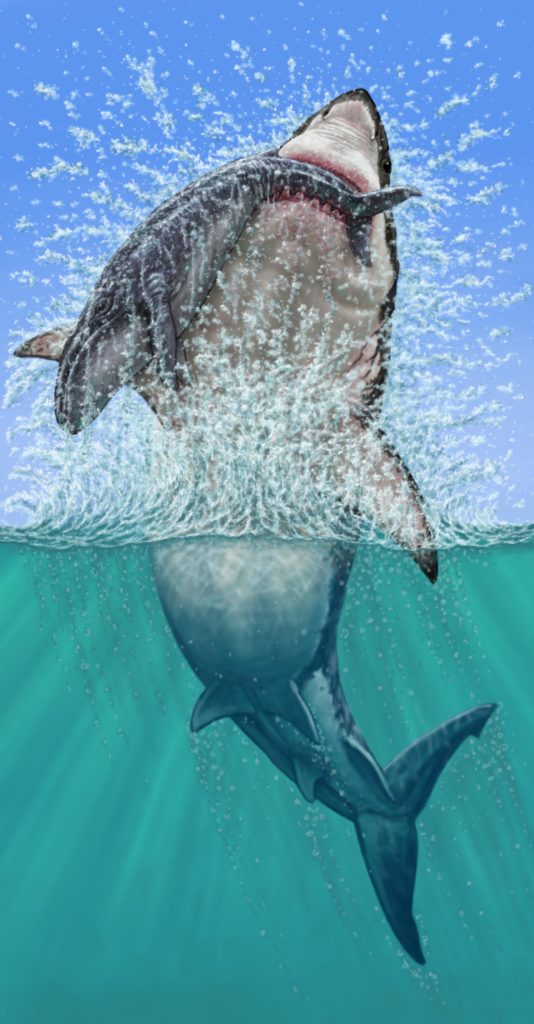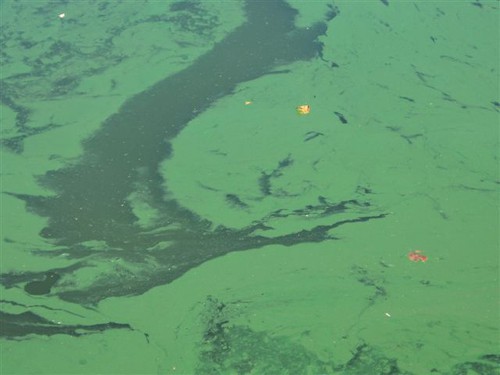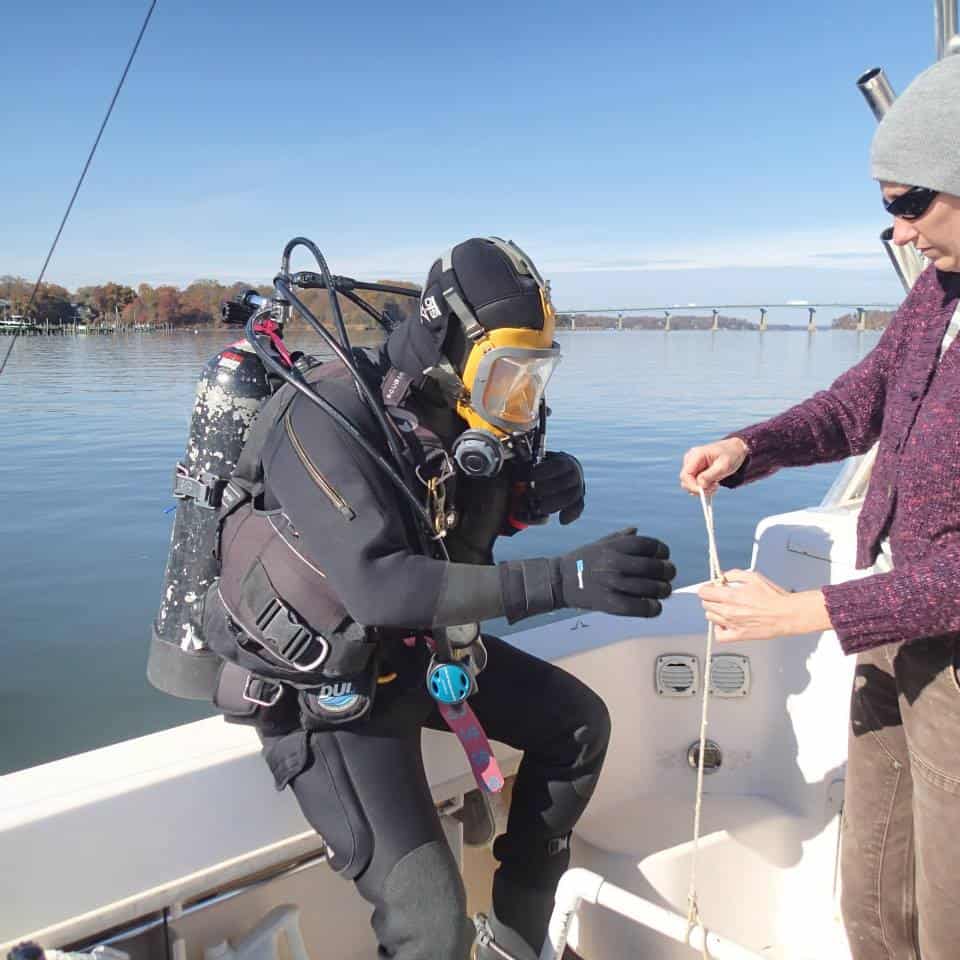A pair of 15-million-year-old fossils found along Calvert Cliffs is shedding new light on the predatory behavior of the massive prehistoric shark megalodon.
Two fossilized vertebrae from the same Miocene whale reveal brutal injuries that local scientists conclude must have come from a megalodon. Amazingly, the whale appears to have survived for another two months after having its bones crushed by the megatooth shark.
Researchers from the Calvert Marine Museum (CMM) and the New York Institute of Technology College of Osteopathic Medicine made a detailed study of the prehistoric fossils. They come from a whale that would have been about 13 feet long and show evidence of a major shear-compression fracture. “For this kind of injury to happen,” CMM researchers say, ” the whale’s backbones had to have been bent very forcefully into such a tight curve that pressure from the adjacent forward vertebra smashed the next one. This would have been an excruciatingly painful injury for the whale.”

No shear-compression fracture like the one in the whale fossil has been found in any living modern-day whale, even from blunt force injuries suffered during boat strikes.
While every visitor who combs the beach at Calvert Cliffs dreams of making a significant find, these unusual fossils were found by fossil collector Mike Ellwood, who volunteers at CMM.
Calvert Memorial Hospital performed CT scans of the broken vertebra fossil, which must have been one of the hospital’s more unusual patients. The scans show that the lower front end of the vertebra was broken off and telescoped into the bottom of the vertebra. The whale lived to see another day and new bone growth fixed the broken piece in place.
So how do researchers know the smashed vertebrae came from a megalodon? While there are other remote possibilities (a bone-crushing seizure, a collision with the seafloor), they believe the most plausible cause was a “crushing ambush” delivered by megatoothed shark, Otodus megalodon.
Other Calvert Cliffs finds indicate that megalodon was successfully preying on whales and dolphins, offering some circumstantial evidence.
CMM’s Dr. Stephen Godfrey and a colleague at NYIT report a single megalodon tooth was found with the vertebrae. It could have been shed by the attacking shark and become embedded in the whale’s body. Or, the researchers say it could also have been from a shark scavenging the whale after it died.
Amazingly, the whale survived for about two months after its gruesome megalodon attack before dying of unknown causes. Want to look depper? The paper describing these fossil finds was just published in the open-access online journal Palaeontologia Electronica (palaeo-electronica.org/content/).
-Meg Walburn Viviano



